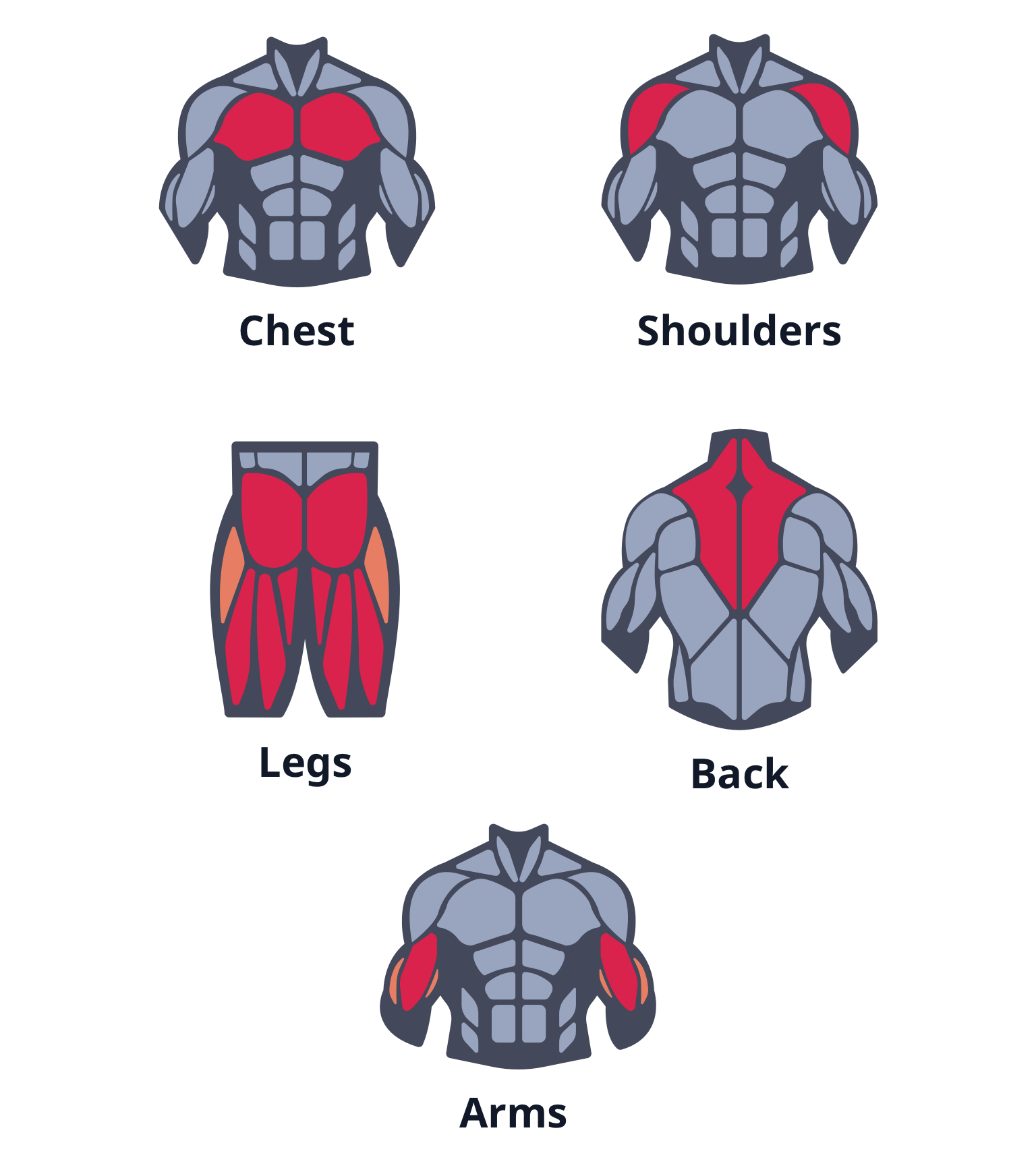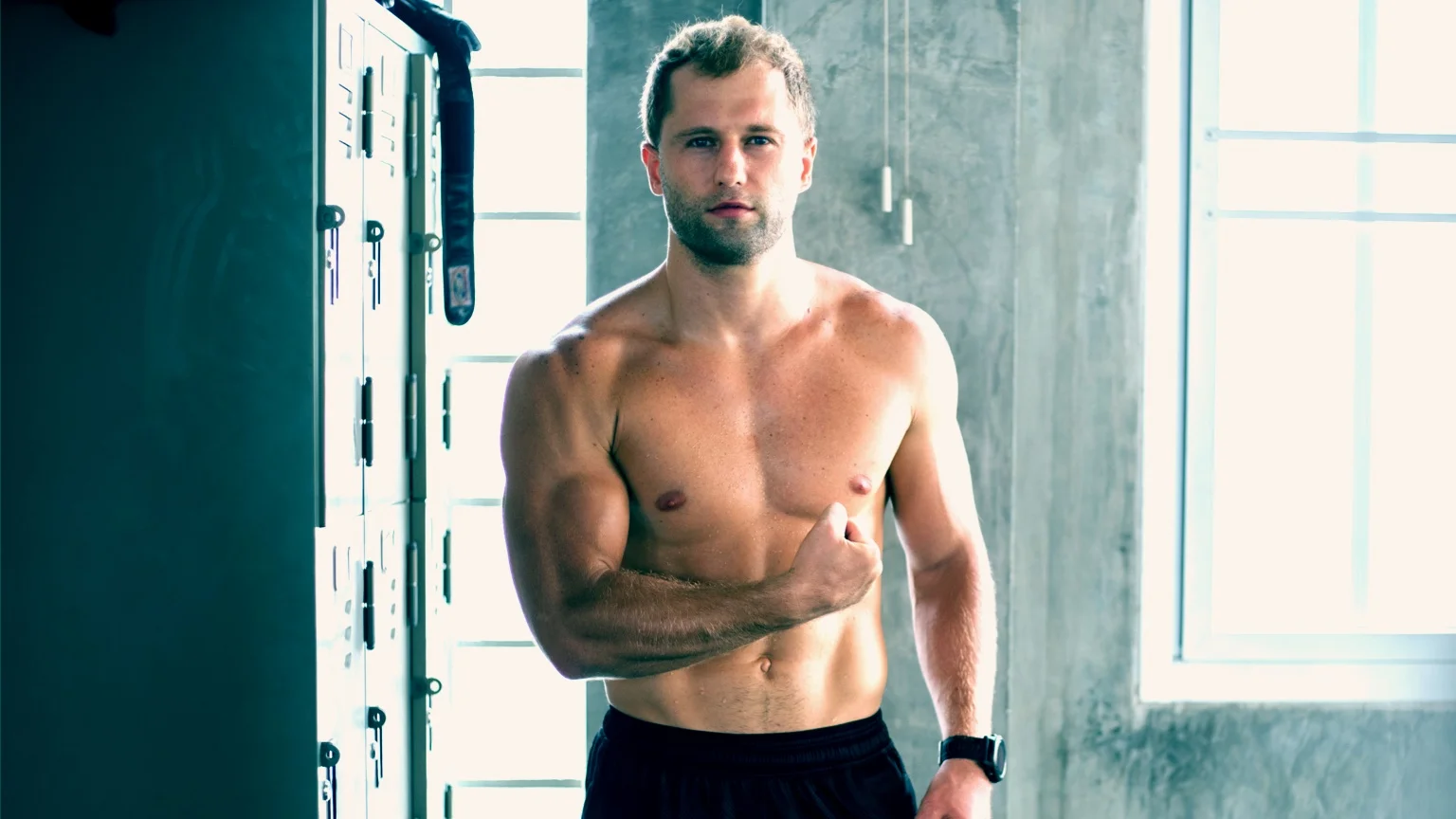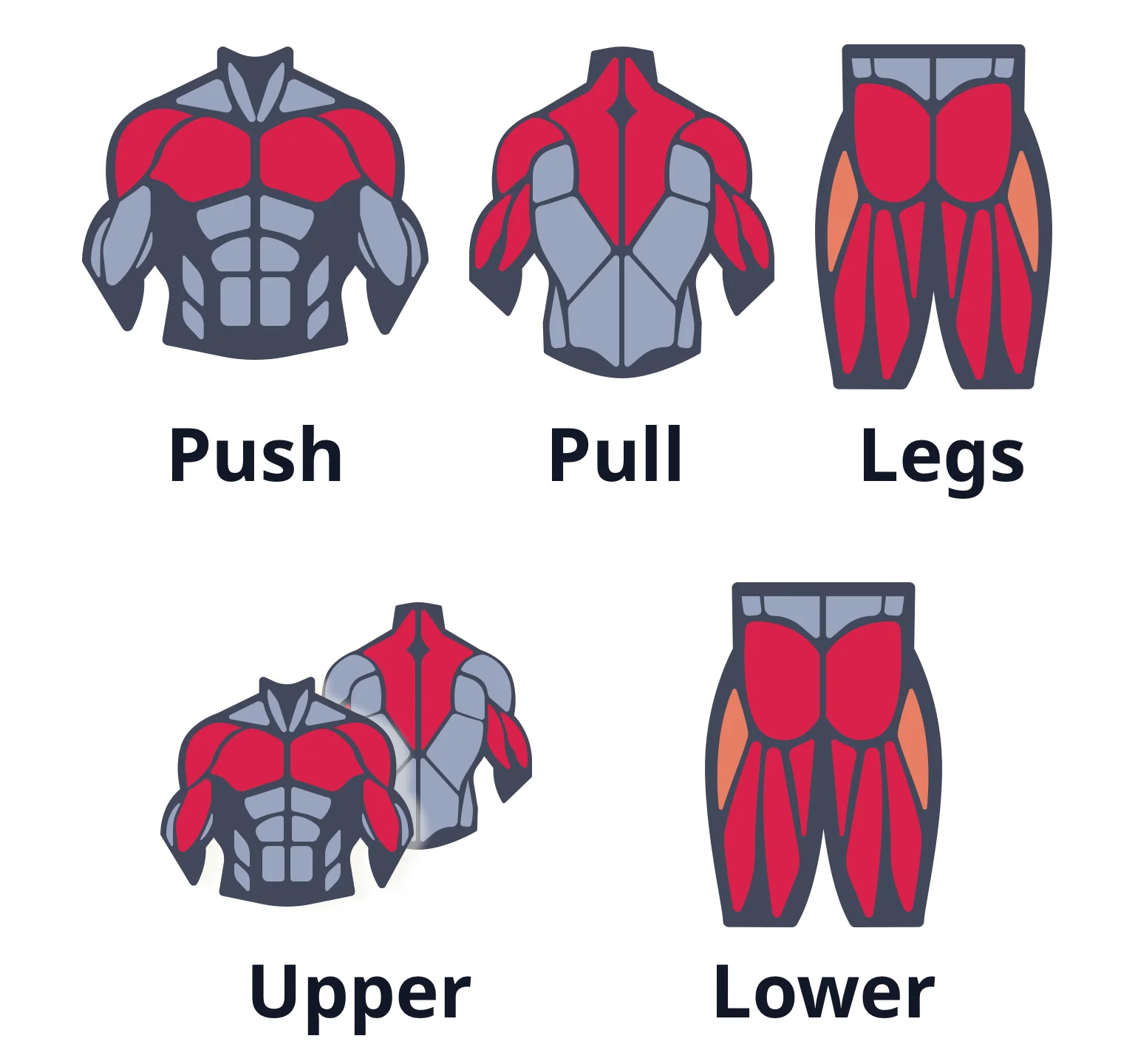About this workout
Tips
What is the PPLUL split?
The PPLUL workout split is a 5 day routine that divides exercises into five categories: push (chest, shoulders and triceps); pull (back, biceps and rear delts); legs (quads, hamstrings, glutes and calves); upper body (chest, back, shoulders, biceps and triceps); and lower body (quads, hamstrings, glutes and calves).
A PPLUL split is effective because it targets each muscle group at least twice per week. It does this by working multiple muscle groups on each day of the split, while ensuring enough time between workouts for rest and recovery. This can lead to greater hypertrophy when compared with bro splits.
You can tailor this PPLUL split to your individual fitness goals and easily adjust it to include specific exercises or focus on certain areas of the body.
Goals of the PPLUL split
Hypertrophy
Using a PPLUL split allows you to maximize hypertrophy in the most efficient way possible. It does this by targeting all the major muscle groups in your body with a combination of compound and isolation exercises. Because it works multiple muscle groups on each day, it allows you to hit each muscle twice per week, making the most of the hours you spend in the gym.
The PPLUL is designed to allow enough rest and recovery time between each session. This allows maximum muscle growth without the risk of overtraining or injury.
Balanced development
Because you work the same muscle groups twice per week, with different exercises, it is easier to prevent muscular imbalances or weaknesses from developing. When you see an imbalance, it's easier to tweak your program to target the imbalance, compared with once-per-week routines like the bro split.
Problems with the bro split
The bro split is another kind of 5 day workout routine that divides your training sessions to target a specific muscle group on each day. For example, Mondays might be chest day. Tuesdays, shoulder day, and so on.
A typical bro split might look something like this:
- Monday – Chest
- Tuesday – Shoulders
- Wednesday – Legs
- Thursday – Back
- Friday – Arms

While this type of split can be appealing to beginner trainees, it does have several downsides that can hinder your progression.
Lack of frequency and volume
With a bro split, you only train each muscle group once per week. This means less volume overall, and it may not be enough to see significant progress.
Muscle growth is driven by a process called muscle protein synthesis. Studies show that the protein synthesis process peaks 24 hours after you exercise and returns to normal after about 36 hours. Since a bro split waits a full week before hitting the same muscle group again, it leaves a lot on the table!
You can see then how a bro split constrains your training frequency and overall volume, and makes it difficult to progress if you are at an advanced level of training.
Muscular imbalance
Because the bro split focuses on a single muscle group on each day, it is easy to neglect other important muscles. This can ultimately lead to muscular imbalance. If you have a muscular imbalance, it may effect your performance in other workouts and exercises, and puts you at a greater risk of injury.
Plateau
Performing the same exercises for each muscle group every week can lead to a plateau in your progression. Without changing the intensity and variations of the exercises you use, your muscles will adapt and could stop responding effectively to your routine.
References
MacDougall, J. D., Gibala, M. J., Tarnopolsky, M. A., MacDonald, J. R., Interisano, S. A., & Yarasheski, K. E. (1995). The time course for elevated muscle protein synthesis following heavy resistance exercise. Canadian Journal of applied physiology, 20(4), 480-486.
Schoenfeld, B. J., Ogborn, D., & Krieger, J. W. (2017). Dose-response relationship between weekly resistance training volume and increases in muscle mass: A systematic review and meta-analysis. Journal of sports sciences, 35(11), 1073-1082.




